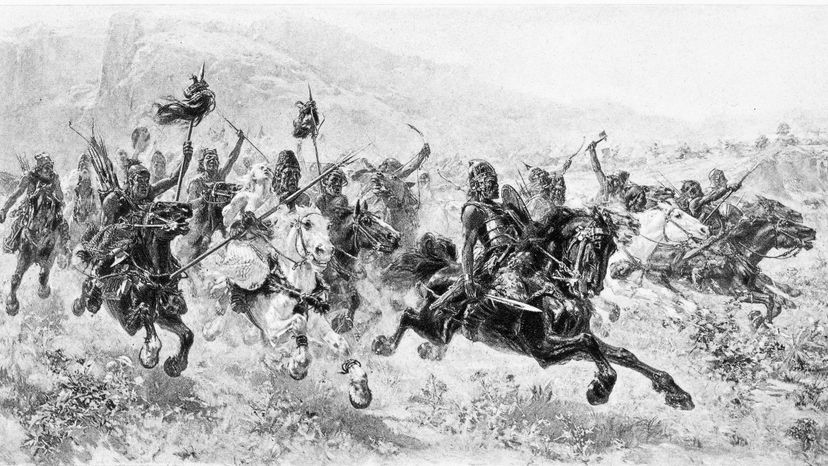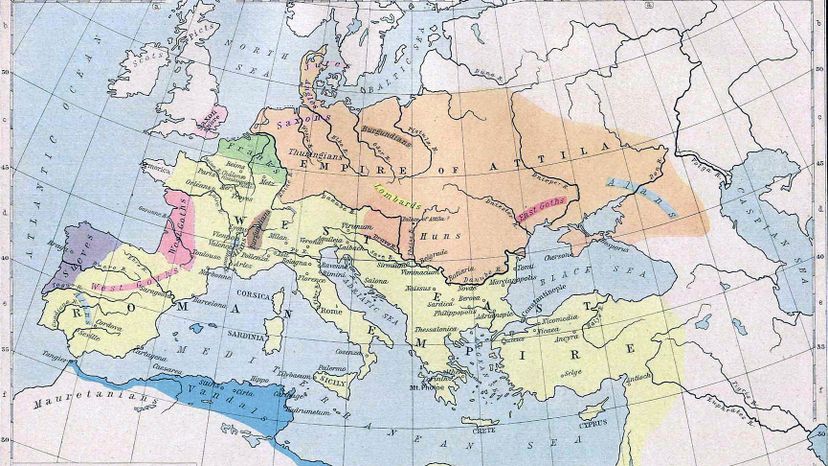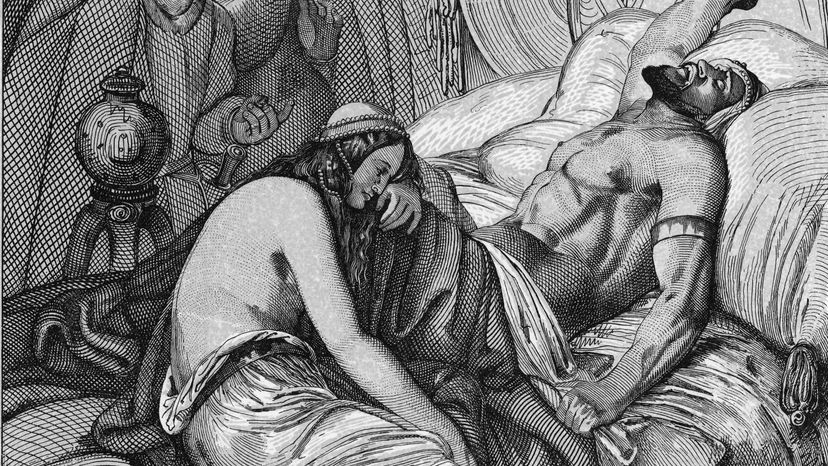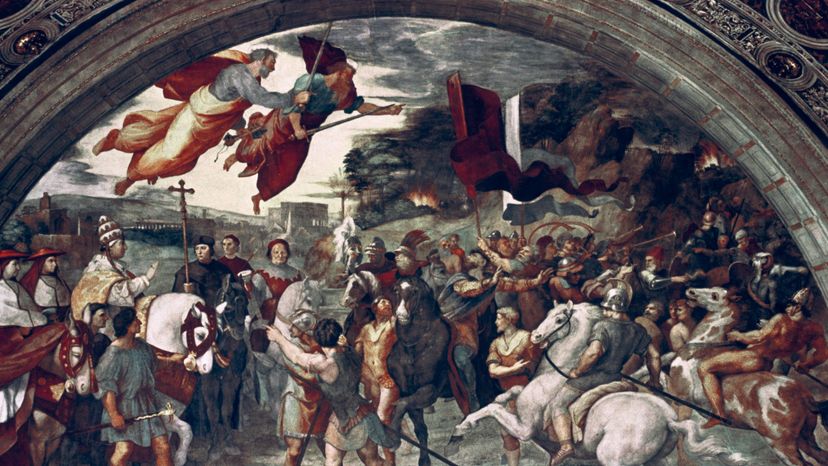
Many fierce warriors slashed, burned and blazed their way through the ancient world in an attempt to conquer and dominate — Julius Caesar, Alexander the Great and Genghis Khan, to name a few. But perhaps no ancient warrior was as brutal and storied as Attila the Hun.
Over a 10-year span, Attila and his army invaded the territories that today encompass Hungary, Spain, Italy and Greece. They burned towns and villages after stripping them of their belongings. One historian wrote that "Attila and his army seemed genuinely to enjoy warfare, the rigors and rewards of military life were more appealing to them than farming or attending livestock."
Advertisement
But a portrait of a rampageous barbarian is not a full picture of Attila. Although he could not read and write, he was born into a powerful Hun family. He knew a lot about human nature and how to rule with cunning rather than force. Exaggerated stories of his viciousness, some of which he may have spread, also helped him conquer without necessarily killing a lot of people.
Attila was born around 406 C.E. in Pannonia, then a province in the Roman Empire. Today, it's part of Hungary. The nomadic Huns, who were animal-herders, had migrated to Europe from Central Asia in 370. By the time Attila arrived into the world, the Huns had been long feared throughout Europe.
They were known for their exceptional skill as horsemen -- their steeds reportedly joined in the battles with their teeth and hooves -- and as mounted archers. Their weapon of choice was the famed Hun bow, a recurve bow whose ends curved back on itself, creating more torque and the ability to pierce armor 100 yards (91 meters) away. The bows were also smaller than traditional bows, and thus more maneuverable. Additionally, the Huns were infamous for their strategic, ferocious battles and impressive mobility [source: Andrews].
Growing up in a privileged household, Attila and his brother Bleda were taught sword fighting, archery, equestrian skills, and military and diplomatic tactics. Sometime around 430, when Attila and Bleda were young men, two of their uncles jointly ruled the Hun Empire. The brothers took over as co-rulers in 434. But 11 years later, in a power-grab, Attila murdered his brother to become sole ruler of the Huns.
By the time Attila became king of the Huns, the tribe had quit the nomadic life and were based in the Great Hungarian Plain, where they had developed an infantry army. Over the next two decades, Attila and the Huns pillaged and destroyed innumerable Roman cities in order to expand their kingdom, which eventually included large portions of the Eastern and Western Roman Empires. (On today's map, the Hun Empire at its greatest would stretch from Germany in the west to Romania in the south, the Netherlands in the north, and Russia and Kazakhstan in the east.) Because of his barbaric, bloody battles, Attila became dubbed "Flagellum Dei," or "Scourge of God."
Although a fierce warrior and looter, Attila is said to have lived humbly in large a log house decorated with animal skins. By contrast, his subordinates often adorned themselves, their homes and their horses with gold, silver and jewels. He is also said to have treated his own people justly. He died in 453 under mysterious circumstances and his oldest son, Ellac, was his appointed successor. But Ellac wasn't the strong leader his father was, and he soon scrapped with his brothers for control. The Hunnic Empire fell apart by 469 and never revived [sources: Mark, Biography].
Advertisement


